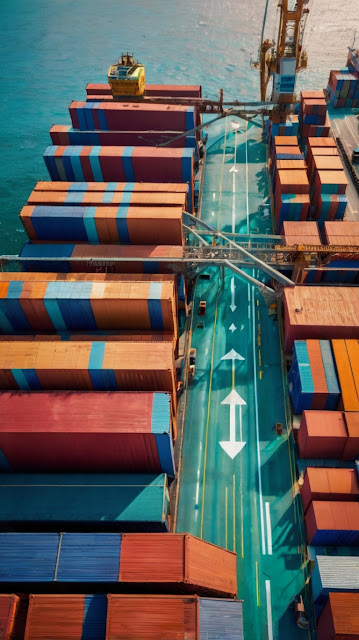In today’s global economy, manufacturers are being blindsided by the ripple effects of rising tariffs. If you're relying on imported components or raw materials, you may already be seeing price hikes of up to 30%, throwing your entire budgeting process into chaos. But here's the kicker—it's not just the cost that’s going up. Your entire competitive edge is at risk.
Margins are being slashed. Delivery schedules are compromised. Quality assurance is becoming a gamble. Your business is leaking money, time, and trust.
You’re not alone. And the good news? There’s a proven method to solve this, starting today.
Tariffs Are Crushing Manufacturing Input Budgets—The Hidden Costs No One Talks About
Step-by-Step Guide to Solving the Tariff Manufacturing Crisis
Let’s break this down using the proven 8-Step Problem-Solving Method—designed to help businesses make strategic, high-impact decisions fast.
Step 1: Define the Real Problem
Why are manufacturing budgets being crushed?
Use the 5W1H method:
-
Who is affected? Manufacturers depending on imported goods.
-
What is happening? Tariffs are inflating costs.
-
When did it start? After new trade regulations and political shifts.
-
Where? Globally, but especially for imports from tariffed countries.
-
Why is it a problem? Profit margins are squeezed, competitiveness is lost.
-
How is it impacting you? Unpredictable costs, supply chain disruptions, and price hikes passed to customers.
✅ The Real Problem: Manufacturers are unable to maintain profitability or operational efficiency due to increased import costs and supply chain volatility caused by tariffs.
Step 2: Break It Down to Pieces
Break the larger problem into manageable components:
-
Cost of imported raw materials or parts
-
Delay in delivery times from alternative suppliers
-
Quality inconsistencies from new sources
-
Impact on final product pricing
-
Customer attrition due to price increases
Step 3: Explore Possible Solutions
Let’s look at strategic directions with a quick SWOT Analysis.
-
Strengths: Flexible production process? Existing supplier relationships?
-
Weaknesses: Overreliance on one country or supplier? Inflexible logistics?
-
Opportunities: Domestic sourcing? Strategic partnerships? Volume discounts?
-
Threats: Rising global trade tensions? Inflation?
Possible Solutions:
-
Diversify suppliers across non-tariff regions
-
Negotiate long-term contracts at fixed pricing
-
Invest in local sourcing, even if costs are marginally higher short-term
-
Re-engineer products for material substitutions
Step 4: Analyze Risks and Rewards
-
Risk: Quality issues with new suppliers?
-
Reward: Cost stabilization and predictable margins
-
Risk: Extended lead times?
-
Reward: More control over local production
Make a short-term compromise to unlock long-term stability.
Step 5: Choose the Best Solution
After analyzing, the best approach for many is:
Build a hybrid supply chain: Blend local sourcing with tariff-free international partners to mitigate both risk and cost.
Step 6: Create an Action Plan
-
Audit current imports and categorize by cost, lead time, and tariff rate
-
Identify 3–5 alternative suppliers for each critical input
-
Run cost-benefit models for each supplier
-
Negotiate new terms and build small test runs to assess quality
Step 7: Execute with Focus
-
Communicate clearly with stakeholders
-
Phase transitions to minimize disruption
-
Keep close tabs on performance metrics (cost, delivery time, defect rate)
Step 8: Review and Adjust
-
After 30, 60, and 90 days—evaluate:
-
Are your costs under control?
-
Has delivery time improved or worsened?
-
Is customer satisfaction stable?
-
Make ongoing tweaks. This is a living strategy.
The Transformation: From Struggling to Strategic
Before: Bloated input costs, poor margins, unhappy customers.
After: Diversified sourcing, protected profitability, improved stability.
You’ve gone from reactive to resilient.
✅ 5 Top FAQ: Tariffs and Manufacturing Costs
Q1: How much can tariffs increase my input costs?
A: In many cases, up to 30% or more, especially in steel, electronics, and automotive components.
Q2: Should I shift completely to domestic suppliers?
A: Not always. A blended approach often works better to balance cost, quality, and speed.
Q3: How fast can I fix my supply chain problem?
A: With focused effort using our 8-step method, you can see transformation within 30–90 days.
Q4: What if local suppliers can’t match my quality standards?
A: Use test batches and dual-source initially to maintain control while evaluating new options.
Q5: Is this problem going away soon?
A: Not likely. Trade tensions and geopolitical shifts are here to stay. Adaptability is your best defense.
💡 Feeling the Pressure? Solve It Now.
You’ve seen the pain and the path forward. Now it's time to act.
👉 Grab our bestselling eBook — Unlock The Art Of Problem-Solving on Kindle
👉 Fix your problem within 24 hours — Solve A Problem Today
👉 Talk to a coach — Problem Resolution Coaching Session
👉 Join a hands-on workshop — Business Problem Solving Workshop





No comments:
Post a Comment